Fall Tree Planting
Fall presents an excellent opportunity to plant larger caliper trees on your property. Caliper trees are older trees, with a minimum trunk diameter of 4 cm, measured 15 cm above ground level. Larger caliper trees have a trunk diameter of 10 cm, measured 30 cm above ground level. In Alberta, spring often brings dry soil and low humidity. However, during fall tree planting, soil moisture is higher due to summer and autumn rains, providing an advantageous environment for root establishment in preparation for the upcoming spring. Proper planting techniques are essential, especially since caliper trees can be susceptible to transplant shock. Before planting caliper trees on your property, consider the following steps:
Tree Species Selection
Selecting a diverse range of tree and shrub species is vital for your property's health and well-being. Alberta hosts numerous tree and shrub species, including introduced ornamental varieties, that thrive despite our challenging climate conditions. To make informed choices, you can use online tools to identify suitable trees and shrubs for your property. Additionally, explore local parks, arboretums, and tree nurseries to observe what grows well in your vicinity. You might be surprised to find a variety of trees, including oaks, maples, ashes, lindens, pines, spruce, Douglas, balsam fir, and Ohio buckeye growing in your area. Hardy flowering trees and shrubs also offer an extensive selection. Consult with local experts like parks managers, horticulturists, or arborists to determine which trees are suitable for your location.
Planting Site
Choosing the right planting site is critical for the long-term success of your tree. Follow the 'right tree in the right spot' principle, considering factors such as soil quality, moisture levels, slope, sunlight exposure, and physical barriers like buildings, fences, or power lines. Prior to selecting a site, visit mature trees in your area to gauge the space required when they reach maturity.
Planting Stock
Keep in mind that caliper trees are significantly larger than small spring seedlings. Towards the end of the season, many local tree nurseries and retail stores offer trees and shrubs for sale in containers, baskets, or burlap-wrapped bundles. Carefully inspect these trees before purchasing.
- Container Stock: Examine typical black container stock for any signs of damage, such as broken branches, weak branch crotches, insect infestations, disease, or irregular shapes. Most importantly, check for any indications of a bound root system. If you notice roots emerging from the container, the root system may be bound, potentially leading to future tree health issues. If roots are excessively bound or trees are damaged, avoid buying them.
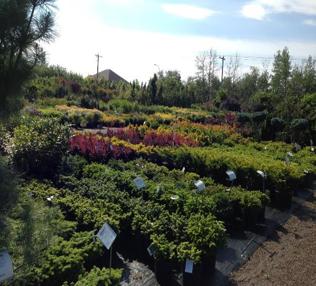
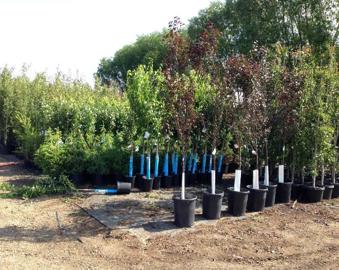 Variety of sizes of potted trees and shrubs
Variety of sizes of potted trees and shrubs
- Balled and Burlap Trees (B&B): These are usually larger caliper trees, removed with their root balls enclosed in wire baskets and wrapped in jute burlap. Thoroughly assess the overall health of the tree before making a purchase.
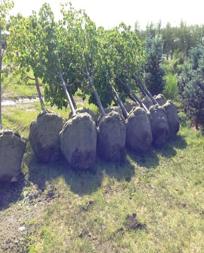
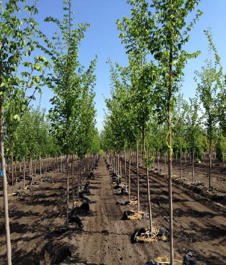
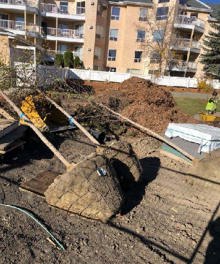
Planting
Proper planting techniques are crucial for the successful growth of your trees. When dealing with plastic container stock, carefully remove the soil by shaking, soaking, or washing it with a hose to reveal the root system. This allows you to identify potential issues like circling, hooking, or girdling roots, which may require pruning or removal. Plant the tree so that the roots sit just below the surface. Dig a hole as deep as the roots and twice as wide, allowing new lateral roots to spread into the surrounding soil. For burlap-wrapped trees, place them in the hole, remove the burlap, and cut the wire on top before filling the hole with soil.
You may need to do proper pruning or remove the roots that girdle the trees. The Arbor Day Foundation provides educational videos and guide how to plant caliper trees and shrubs, available here:
https://www.arborday.org/trees/planting/
- Tree Planting Hole Size: Dig a hole that is as deep as the roots, but 2 to 3 times wider than the root ball. The wide hole will make it easier for the new lateral roots to grow into the surrounding soil. For a basket and burlap tree, properly fit it into the hole, then remove the burlap and cut the wire on top before filling the hole with soil.

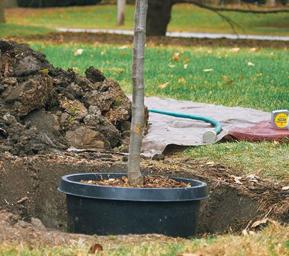
- Tree Planting Depth: Plant so that roots are just below the surface with the root collar slightly above ground level.
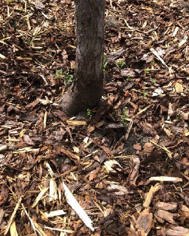
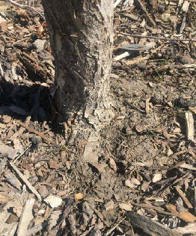
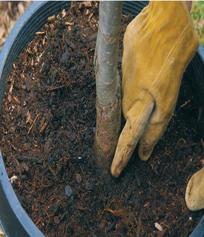
- Backfilling: Do not add soil amendments to the planting hole. In very poor soils, you can add up to 20% of the good soil, although this has to be mixed with native soil. After you set the tree straight, firmly pack the soil to avoid air pockets.
Staking
Staking is generally unnecessary for small, sheltered trees. However, in windy areas or for tall, 'leggy' trees, staking may be required. Remember to remove stakes after a few years to avoid hindering the tree's natural growth.
Mulching
Mulching offers several benefits, including weed prevention, protection against extreme heat, and moisture retention around trees. Create a donut-shaped wood chip cover around your tree to keep water in. Avoid placing wood chips directly against the trunk, as this can attract rodents, insects, and potential diseases. Mulch also safeguards tree roots from winter freezing and reduces the risk of root damage and tree mortality.
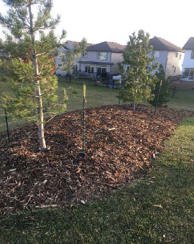
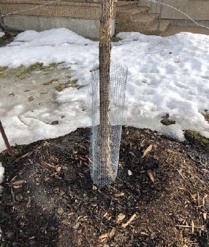
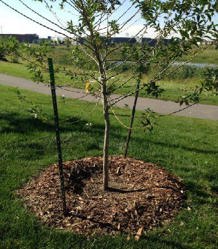
Watering
After planting, ensure that your tree receives sufficient water before the onset of freezing temperatures. The amount of water required depends on the soil type and the specific water needs of the tree species. Water immediately after planting and again three days later. Avoid letting the tree dry out; if you can easily insert a 6-inch screwdriver into the soil, it has sufficient moisture. Drip irrigation serves as a long-term solution for watering your trees, while turf irrigation may not be optimal.
Fertilization
Fall planting generally does not necessitate fertilization unless there is a nutrient deficiency in heavy clay soils. Avoid fertilizing trees and shrubs after August 1. For heavy clay soil, consider fertilizing after leaf drop.
As the leaves begin their spectacular transformation from vibrant greens to a kaleidoscope of reds, oranges, and yellows, the fall season offers a unique and often underestimated opportunity for tree planting. Fall tree planting is a rewarding endeavor that can beautify your landscape and provide enjoyment for generations to come. By following these steps, you can maximize the success of your fall tree planting efforts and ensure the health and longevity of your caliper trees. By selecting the right tree species, using proper planting techniques, and providing ongoing care, you can harness the advantages of the fall season to nurture nature's beauty on your property.
Contact Us
Saddle Hills
Junction of Hwy 49 & Secondary Hwy 725
RR1, Spirit River AB
T0H 3G0
T. 780-864-3760
Fax 780-864-3904
Toll-free 1-888-864-3760
frontdesk@saddlehills.ab.ca
Sign up to our Newsletter
Stay up to date on the Saddle Hills activities, events, programs and operations by subscribing to our eNewsletters.
